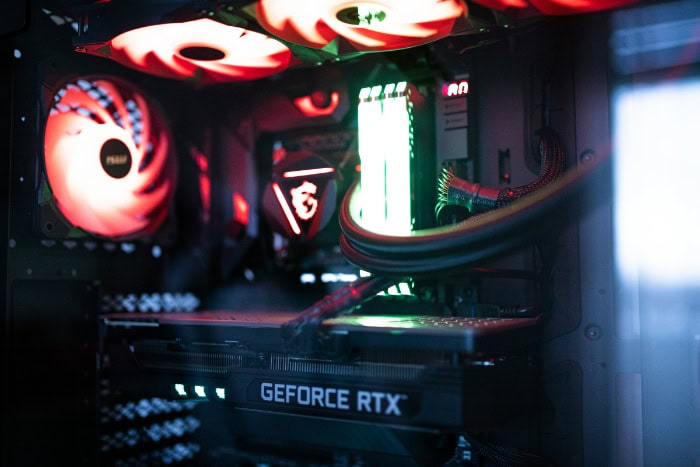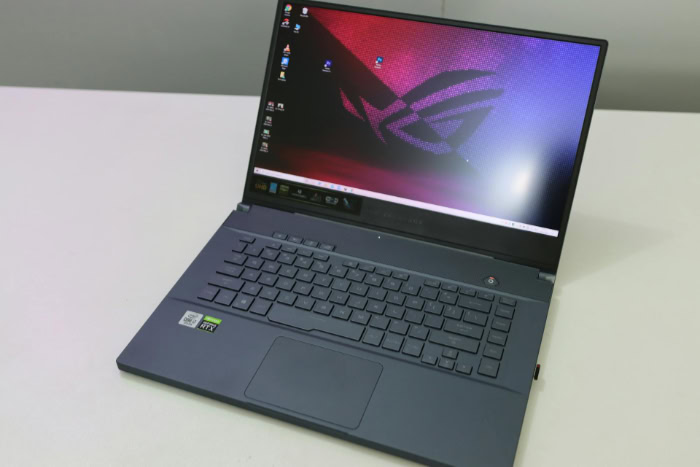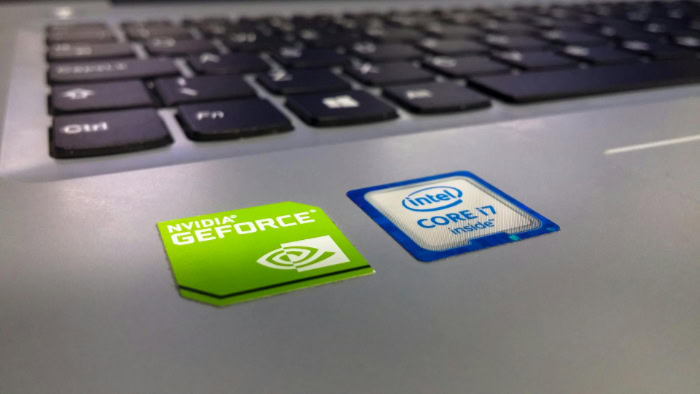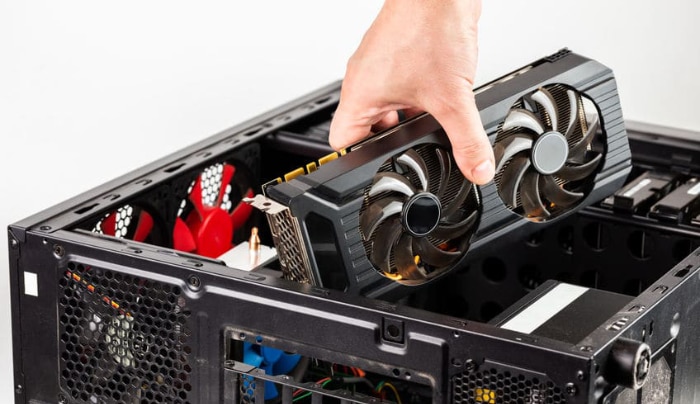Desktop GPU vs. Laptop GPU: Gaming, Rendering, and More

For anyone diving into gaming, content creation, or GPU-intensive tasks, the choice between a desktop GPU and a laptop GPU can feel like a balancing act. Desktops promise unparalleled performance, upgradability, and reliability, while laptops offer impressive power packed into a portable form.
However, these options differ significantly in areas like thermal performance, power consumption, and overall cost-effectiveness.
Laptop GPUs have come a long way, delivering remarkable performance in slim, travel-friendly machines. Yet, desktop GPUs remain the go-to for those seeking raw computational power and long-term flexibility.
Performance and Technical Capabilities
The performance of desktop GPUs compared to laptop GPUs has long been a topic of discussion among gamers, creators, and professionals. While both are designed to deliver high-quality graphical performance, the differences in hardware design, power allowances, and optimization lead to noticeable disparities in their capabilities.
From raw computing power to architectural limitations, the performance gap between the two becomes more apparent with closer inspection.
Raw Power Comparison
Desktop GPUs often have an undeniable advantage in raw power due to their larger physical designs, higher power limits, and more advanced cooling solutions. These factors allow desktop GPUs to feature higher clock speeds, a greater number of CUDA cores (or equivalent computational units), and significantly more VRAM compared to their laptop counterparts.
For example, a desktop GPU like the NVIDIA RTX 4090 can have clock speeds exceeding 2.5 GHz and up to 24 GB of GDDR6X VRAM, offering unparalleled performance for demanding tasks such as 4K gaming or large-scale 3D rendering.
In contrast, laptop GPUs are designed with efficiency and portability in mind, which imposes constraints on their power budgets and overall size. This can result in reduced CUDA cores, lower clock speeds, and often smaller memory capacities.
Even when a laptop GPU shares the same model number as a desktop GPU, such as the RTX 3080, the mobile version is generally less powerful, operating within stricter thermal and power limits. These compromises are necessary to ensure manageable heat output and prolonged battery life in portable devices.
Benchmark Disparities
Benchmark results highlight the performance gap between desktop and laptop GPUs. For gaming, desktop GPUs consistently deliver higher frame rates across resolutions, especially for graphically intensive titles.
A desktop RTX 3080, for example, can run games at ultra settings in 4K with superior frame rates compared to its mobile counterpart, which may struggle to hit similar performance even in 1440p resolutions.
The gap is even more pronounced in rendering tasks and professional workloads. Rendering times for 3D models or video projects tend to be faster on desktop GPUs due to higher sustained performance, as laptop GPUs can suffer from thermal throttling during prolonged usage.
Once the internal temperatures of the laptop GPU rise beyond a certain level, the system may automatically reduce clock speeds to prevent overheating, which significantly reduces processing power. Desktop GPUs, supported by robust cooling systems, rarely encounter such issues, maintaining consistent performance for extended periods.
Thermal throttling, in particular, creates an unpredictable experience for laptop GPU users during resource-heavy workloads. As the performance dips during intensive tasks, it can lead to inefficiencies in workflows or interruptions in gaming sessions, a problem that desktop users are far less likely to face.
Architectural Limitations
The design constraints of laptops necessitate more compact and thermally efficient GPU architectures, which leads to further compromises. Unlike desktop GPUs, which typically feature the full die of a GPU chip, laptop GPUs are often built on cut-down versions of the same architecture.
For instance, an RTX 4090 desktop GPU uses the AD102 die, while the RTX 4090 laptop GPU uses the AD103 die, a smaller and less powerful version of the same chip. This results in a significant reduction in performance capacity, even though the two GPUs may share the same name.
Moreover, laptop GPUs prioritize energy efficiency, which means they are optimized for lower power consumption rather than maximum performance. While this benefits portability and battery life, it can limit the GPU's ability to fully utilize its potential during demanding tasks.
Desktop GPUs, unrestricted by such constraints, are free to push the hardware to its limits, delivering a level of performance that mobile devices cannot replicate.
Power and Thermal Constraints

The design and performance of GPUs rely heavily on managing power consumption and heat. Desktops and laptops take drastically different approaches to handling these requirements due to the physical space available, cooling limitations, and power needs.
Wattage Disparities
Power consumption is one of the clearest distinctions between desktop and laptop GPUs. Desktop GPUs are built to draw significantly more power, sometimes exceeding 450 watts for high-end models like the NVIDIA RTX 4090.
This robust power budget enables them to achieve higher clock speeds, operate more CUDA cores, and deliver superior performance during demanding tasks like gaming, animation rendering, or machine learning.
Laptop GPUs, on the other hand, operate within much tighter power limits, often capped at around 125 to 175 watts for high-performance models and even lower for more modest configurations. The limited power allocation prevents laptop GPUs from achieving the same performance as their desktop counterparts, even when both share the same architecture or branding.
Manufacturers impose these limits to ensure that the device can remain portable, thermally manageable, and compliant with battery performance expectations.
This disparity in wattage often translates into raw performance differences during peak workloads, with desktop GPUs maintaining significantly higher benchmarks. The additional power allows desktop GPUs to run more demanding tasks without compromising efficiency, while laptop GPUs must strike a balance between performance and energy efficiency to avoid overheating or draining the battery too quickly.
Cooling Solutions
Managing heat is another area where desktop and laptop GPUs diverge sharply. Desktop GPUs benefit from spacious cases that can house larger cooling systems, such as heat pipes, high-performance air coolers, or even liquid cooling solutions.
These setups can efficiently dissipate heat generated by the powerful hardware, allowing the GPU to sustain high performance even during prolonged usage. Larger fans and better airflow through the desktop chassis further ensure that the GPU remains within safe operating temperatures.
Laptops, however, are confined to compact designs that rely on smaller cooling solutions, such as heat sinks, vapor chambers, or a combination of thin fans. While these methods are effective for short bursts of activity, they struggle to cool the GPU during extended gaming sessions or resource-heavy workloads.
As temperatures rise, laptop GPUs often throttle performance to avoid damage, reducing clock speeds and power consumption to bring heat levels back under control. This makes consistent performance a challenge for laptops running intensive tasks, especially when operating in warmer environments or under sustained pressure.
The lack of flexibility in cooling options for laptops also means that users have little room for customization. Desktop GPUs, in contrast, can often be paired with aftermarket cooling solutions, giving users more control over both performance and noise levels.
Battery Dependency
One of the biggest trade-offs for laptop GPUs is their reliance on battery power when unplugged. While laptops may offer decent GPU performance when connected to a power outlet, operating on battery alone imposes severe limitations.
To conserve energy and extend battery life, the GPU significantly reduces its power draw and, consequently, its performance capabilities. Tasks that run smoothly while plugged in can quickly become sluggish when the laptop is running on battery power.
This issue is particularly pronounced in gaming laptops, where unplugged performance often falls well short of expectations. Many users notice steep drops in gaming frame rates or rendering speeds because the GPU cannot access its full power budget.
The need to optimize for battery life creates a compromise that simply does not exist for desktop GPUs, which are always plugged in and able to deliver maximum performance without concern for power conservation.
Naming Conventions and Marketing Pitfalls

The naming of GPUs is often a source of confusion for consumers, particularly when it comes to comparing desktop and laptop graphics models. Manufacturers tend to use the same model numbers for GPUs across both platforms, creating the impression that their performance is equivalent.
However, significant architectural differences, performance disparities, and marketing strategies often mask the reality.
Misleading Model Numbers
One of the most common points of confusion stems from manufacturers labeling desktop and laptop GPUs under the same model name, even though they are built on fundamentally different hardware. For instance, an NVIDIA RTX 4090 desktop GPU is based on the AD102 die, which is the full high-performance GPU silicon.
In contrast, the RTX 4090 laptop GPU uses the AD103 die, a scaled-down version with fewer CUDA cores and reduced power capacity. Despite the shared branding, the two perform vastly differently, with the desktop version delivering significantly better results in both gaming and professional tasks.
The same naming pattern applies across the lineup, from entry-level models to flagship GPUs. Consumers may assume that a laptop RTX 3080 performs on par with its desktop counterpart when, in reality, it aligns more closely with a desktop RTX 3060 or RTX 3070.
The shared names mask the performance gaps, creating a false sense of parity between the platforms.
Performance Tiers
Laptop GPUs frequently occupy a lower performance tier compared to their desktop counterparts with the same name. Manufacturers optimize laptop GPUs for power efficiency and thermal control, which naturally limits their potential performance.
As a result, a laptop GPU that carries the branding of a high-tier desktop model often competes against mid-tier GPUs in desktop systems.
For example, laptops equipped with GPUs labeled as RTX 4070 or RTX 4060 often match the performance of desktop GPUs a tier or two lower, such as the RTX 3060 or RTX 3050. This discrepancy creates challenges for consumers planning a purchase.
Many laptop users expect desktop-grade performance without realizing the GPU’s limited capabilities, especially during resource-intensive tasks like high-resolution gaming or 3D content creation.
Understanding how mobile GPUs align with desktop performance tiers is essential for setting realistic expectations and evaluating whether a particular laptop model justifies its price. Without this awareness, buyers may end up paying a premium for a mobile GPU that underperforms compared to a more affordable desktop counterpart.
Consumer Confusion
Misleading marketing practices and inconsistent specifications contribute to consumer confusion. The mirrored naming schemes can make it difficult to compare GPUs across desktop and laptop platforms, leaving buyers unsure whether they are getting a good value.
Compounding this issue is the broad range of laptop variants, where the same GPU model can be offered in configurations with wildly different power limits. For example, an RTX 3080 laptop GPU may be configured with anywhere between 80W and 150W of power, dramatically influencing both its potential performance and thermal behavior.
Decoding GPU specifications is one of the most effective ways to overcome this confusion. Consumers should pay close attention to details such as CUDA core counts, power consumption, clock speeds, and memory bandwidth when comparing desktop and laptop GPUs.
Evaluating benchmarks from trusted sources can further clarify how specific models perform in real-world scenarios.
Another strategy to prevent overpaying is understanding the naming nuances and aligning them with realistic performance needs. Buyers should avoid overinvesting in high-end laptop GPUs if mobility is not a priority, as desktop GPUs deliver superior performance at a lower price within a stationary setup.
Similarly, users looking for portability should consider whether the additional cost for higher-tier laptop GPUs aligns with their requirements, especially if the lower performance tier suffices for their workflows or gaming preferences.
Practical Considerations and Longevity

Choosing between a desktop and laptop GPU extends beyond performance metrics. Practical factors such as upgradeability, cost efficiency, and use case alignment often play a significant role in determining which option best suits an individual’s needs.
Upgradeability
Desktop GPUs excel when it comes to upgradeability. Their modular design allows users to replace or upgrade the GPU as technology advances, giving desktops a significant edge in terms of flexibility and long-term viability.
When a desktop GPU becomes outdated or no longer meets performance requirements, a new GPU can be easily swapped into the system without replacing other components. This modular approach also extends to other parts of the desktop, such as storage, cooling, or power supply, making it easier to maintain and extend the machine’s lifespan.
In contrast, laptop GPUs are typically soldered directly onto the motherboard, making upgrades nearly impossible for most users. The all-in-one design of laptops prioritizes compactness and portability at the expense of modularity.
Some high-end laptops may offer limited upgradeability through external GPU (eGPU) docks, but even these solutions introduce additional costs and performance limitations compared to internal desktop GPUs. For users who need hardware that can keep up with evolving requirements, the inability to upgrade a laptop GPU can be a significant drawback.
Cost Efficiency
Desktop GPUs often provide better price-to-performance ratios compared to their laptop counterparts. The reduced need for size and thermal constraints allows desktop GPUs to deliver higher performance at a lower cost.
Furthermore, desktop systems themselves are generally more cost-efficient over time, as individual components can be upgraded or replaced without the need to purchase an entirely new device. This makes desktops a more economical choice for users seeking high-performance gaming or professional workloads on a budget.
Laptops, while providing the advantage of portability, often carry a premium price tag for comparable GPU performance. Manufacturers must invest in compact designs, thermal engineering, and power optimization, which drive up production costs.
As a result, laptops equipped with high-performance GPUs tend to cost significantly more than desktop systems with equivalent or better GPUs. Additionally, the shorter lifespan of laptops, due to the inability to upgrade core components like the GPU, often translates into higher replacement costs when the machine becomes outdated.
Users who prioritize value should consider the overall lifecycle costs of their system. While a high-performance laptop may seem appealing, the need for future replacements or external GPU solutions can make it less cost-effective in the long run compared to a modular desktop setup.
Use Case Alignment
Personal use cases often dictate whether a desktop or laptop GPU is the better option. For gamers seeking high frame rates and ultra-settings at higher resolutions, desktops remain the preferred platform.
The ability to accommodate larger, more powerful GPUs ensures smoother gameplay and better visual fidelity, particularly for resource-heavy titles. Similarly, content creators working on tasks like video editing, 3D rendering, or simulations often benefit from the sustained performance and superior cooling capabilities of desktop GPUs.
Laptops shine in scenarios where portability is a priority. Professionals who frequently travel or students who need to work in multiple locations may find the compact form factor and mobility of a laptop indispensable.
Modern laptops with dedicated GPUs can handle a wide range of workflows, from gaming to light content creation, making them suitable for users who value flexibility over maximum performance. That said, those relying on laptops for GPU-intensive tasks should ensure that the machine’s thermal and power constraints can manage their workload effectively.
Conclusion
The decision between a desktop GPU and a laptop GPU ultimately comes down to balancing power, portability, cost, and long-term value. Desktop GPUs stand out for their raw performance, upgradeability, and cost efficiency, making them ideal for gamers, content creators, and professionals who prioritize maximum power and flexibility.
Their modularity ensures they remain a future-proof investment as technology advances, and their superior cooling mechanisms allow for sustained performance during even the most demanding tasks.
Laptops, on the other hand, excel in portability and convenience, catering to users who value mobility and need a compact solution for work or entertainment. While they may deliver impressive performance for their size, their thermal and power constraints, as well as higher replacement costs due to limited upgrade options, make them better suited for scenarios where portability is non-negotiable.
Gamers seeking high frame rates at ultra settings, professionals working on resource-heavy projects, and users with a limited budget often find greater value in desktops. Laptops are ideal for those who work across multiple locations or need a versatile device that can handle gaming and productivity tasks without being tied to a desk.
In the end, choosing between the two depends on your specific needs, priorities, and how you plan to use your system in the long term.


